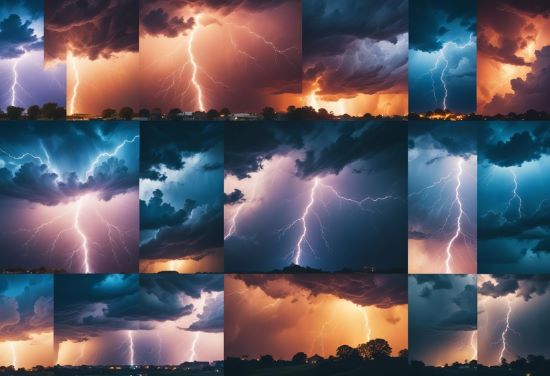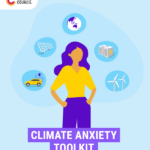Ask an AI how it will revolutionize weather forecasting and you get an interesting answer. I went to Perplexity.ai, a new AI-based search engine that I have been playing with for the last couple of weeks. I asked it “How can AI help with weather forecasts?” It spewed out numerous benefits for meteorologists and lay weather forecasters.
Meteorology, a profession that I considered when I was a lot younger, is a job where you can repeatedly get the wrong answer and remain employed. It is sort of like baseball in that respect. Today’s middle-of-the-road players are paid millions for failing to hit the ball and get on base more than 70% of the time. Do better than that and you can make USD 15 to 30 million a year.
But I digress from the subject at hand. How Perplexity.ai explains the advantages of using AI to revolutionize forecasting comes down to five things.
- Faster Predictions – AI algorithms can process vast amounts of weather data much more rapidly than traditional methods providing quicker responses to evolving weather situations.
- Improved Accuracy – Machine learning analyzes historical and real-time data to identify intricate patterns and correlations that weather forecasters may miss.
- Enhanced Efficiency – Leaving AI to sift through historical and current weather data and feed its results to human meteorologists allows the latter to interpret and communicate information more.
- Democratizing Forecasting – AI doesn’t need to run on expensive technology, nor use complex physics-based weather simulators running on supercomputers making advanced forecasting possible globally and not just the purview of rich countries.
- Complementing Traditional Methods – AI can be integrated with current forecasting methodologies to enhance performance and prediction. After all, many AIs are black boxes and even their designers and builders don’t understand the inner workings. So rather than replace meteorologists and weather forecasters, the role AI can play is more complimentary.
Perplexity when asked also provided a limitation that affects AI short and long-term weather forecasting. AI is only as good as the data it reads. It develops expertise by training on large amounts of data fed to it. Then the AI engine parses the data and begins to see patterns emerge that humans may miss.
In the case of weather, historic data includes daily high and low atmospheric and water temperatures, barometric readings, radar images, cloud and wind conditions, and so on. Today, however, in the Age of Climate Change, past data may be less relevant when predicting future weather.
Recent unprecedented extreme weather events may not register with a generative AI as more than once-in-a-century events. Yet we are starting to experience these types of extremes multiple times within recent decades. Then there are future predictions from climate simulations of future hurricanes in the Atlantic and Caribbean reaching Category 6 levels. If the AI training data doesn’t include a historical reference it becomes that much harder to predict.
And finally, I’m not so sure that an AI can predict local weather conditions faster or better than a layperson with a backyard weather station and a good set of eyes. When I was young I had a book about clouds and what each type meant in terms of oncoming weather. I also had a barometer that had been given to me as a birthday present. (If you didn’t know before, you now do know that I was a nerd.)
This nerd would tell his parents the daily weather forecast based on barometric pressure, looking at the clouds, and sticking a wet finger out the window to see which way the wind was blowing. My methods worked. I was almost as accurate as the local weather forecaster which in baseball parlance had me batting well above .500.
But what got me to write about AI and predicting the weather today happened because I read an announcement from Nvidia, the digital signal processing and AI chip manufacturer about AI weather and climate forecasting. That got me looking at the current state of AI-based weather forecasting technologies, and this is what I found.
AI Weather Tracking and Forecasting Tools From Nvidia
The Nvidia announcement was the unveiling of StormCast, a new generative AI developed in collaboration with Lawrence Berkeley National Lab and the University of Washington. It is part of the company’s Earth-2 climate simulation.
StormCast is used presently to predict and track storm supercells and tornadoes in the American Midwest. Training of the AI involved 3.5 years of climate data contributed by the U.S. National Oceanic and Atmospheric Administration (NOAA).
StormCast can predict storm supercells and tornadoes down to a 3-kilometre range with hourly updates. Before StormCast, the best NOAA could do was 30-kilometre range forecasts within 6-hour windows. Combined with Doppler radar, Nvidia claims that StormCast is 10% more accurate than anything else out there.
Nvidia has also developed the Correction Diffusion Model (CorrDiff), a generative AI tool capable of producing high-resolution images from weather model data. The images are 12.5 times higher in resolution than existing numerical models and are generated 1,000 times faster. CorrDiff is currently used in Taiwan for tracking and predicting typhoons.
AI Weather and Climate Tools From Google
Google has created a generative AI called the Neural General Circulation Model (NeuralGCM) and a tool called GraphCast. The model was developed by a team of scientists from Google Research, DeepMind, MIT, Harvard and the European Center for Medium-range Weather Forecasts (ECMWF). GraphCast combines neural networks and machine learning. It runs on a laptop and combines AI with physics and past decadal weather data.
Where traditional weather forecasting models require hours of runtime on supercomputers, GraphCast generates forecasts for both weather and climate. Machine learning was used to absorb 40 years of historical data from the ECMWF. It is used to deliver one to 10-day weather forecasts over ranges of 140 kilometres.
Aaron Hill, a professor of meteorology at the University of Oklahoma in a recent Axios interview noted that “Forecasters haven’t built up a reservoir of trust with these AI-based prediction systems yet” compared to the weather and climate model simulations currently in use. But that is about to change says Stephan Hoyer of Google Research and one of the developers of GraphCast, who countered Hill’s argument stating, “It really shocked a lot of people in the field that you can use AI in the guts of the weather and climate simulation engines.”
AI Weather and Climate Systems From Huawei
Last year, the ECMWF began using Huawei’s Pangu-Weather Model, an AI global weather forecasting tool. Pangu-Weather is being used to produce mean sea-level pressure, wind speed, temperature and other forecasts for predicting storm trajectories, air quality and weather patterns. ECMWF reports that “results are very promising with comparable skill for both global metrics and extreme events.”
All of these forays into AI weather forecasting cannot happen soon enough as our future increasingly will face uncharted waters when it comes to weather because our atmosphere and oceans continue to warm.









